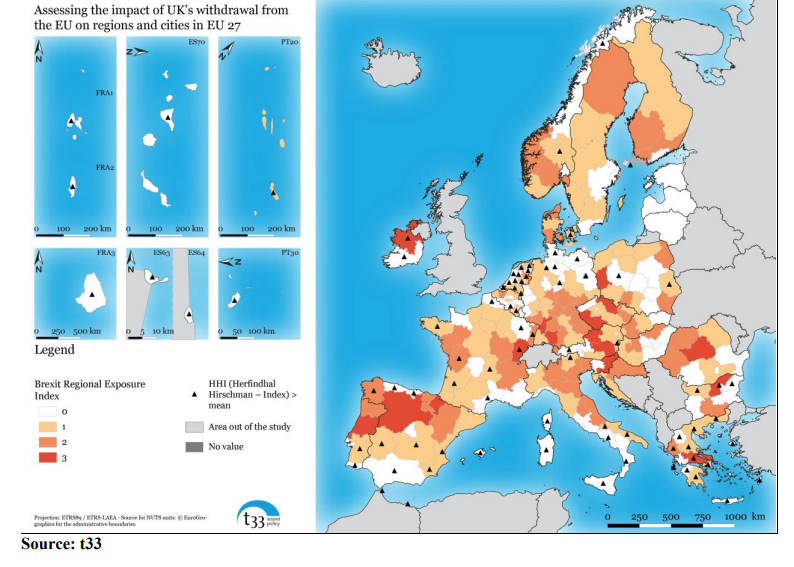Cohesion Policy post-2027: What Experts Really Told Us — Insights After the t33 Workshop
DEC 2025

Publishing 15 May 2018
The European Committee of the Regions (CoR) published the study Assessing the impact of the UK’s withdrawal from the EU on regions and cities in EU27. The study has been coordinated by François Levarlet and prepared by Paolo Seri, Chiara Zingaretti, Dea Hrelja, Elodie Lorgeoux (t33), with contributions for the case studies from Christian Lüer (Spatial Foresight) and Martyna Derszniak-Noirjean (ÖIR), and additional comments from Jayne Woolford and Francesco Trombetta.
The main objective of the study is to provide an analysis on the exposure of EU27 regions to the UK and the likely impact of the UK’s withdrawal from the EU on regions and cities in EU27. In particular, it individuates whether there are regions which are particularly exposed, in terms of trade, to UK.
The immediate impact of Brexit on regions will depend on the negotiation agreement that will be reached for each single sector and the weight that each sector has in the productive structure of that specific region. For this reason, the analysis is based on two indices:
The Brexit Regional exposure index (BREI) that measures the trade exposure of the EU 27 regions to UK.
The Herfindahl Hirschman index (HHI) that measures the productive specialisation of a region. It is based on the assumption that the more varied the economic structure of a region is, the more resilient the region is.
Thanks to these indices the study identifies the most affected regions by Brexit, with regard to the following sectors: transport vehicles, machinery, electronics, textile and furniture, vegetables, food and wood, chemicals and plastic.
The study also includes seven case studies, addressing different issues related to Brexit like trade of goods and services, direct investment flow, migration and demography, infrastructure, access to exclusive zone (fishing), tourism, research and development activities, gross border management. Exploring different dimensions other than trade flows, the case studies complement with qualitative information, the analysis provided by the indices.
Considering the still high uncertainties on the future of Brexit negotiation and possible scenarios, knowing which sectors are exposed to UK in each region is a very important element to shape negotiation proposals at regional level. In addition, the report provides a starting point to the local and regional authorities willing to prepare stakeholders (investors, customers and employees) by using scenario planning to explain potential effects of Brexit on the business.
The figure below presents the BREI and the HHI indices, for each EU27 region NUTS2. The BREI sums up the index in all sectors addressed by the analysis, assuming values ranging from 0 to 3. Regions in red are the most exposed to UK.

DEC 2025
NOV 2025
OCT 2025
JUN 2025
MAY 2025
MAR 2025